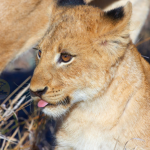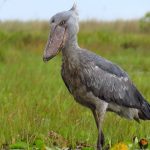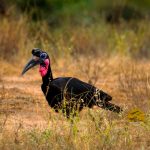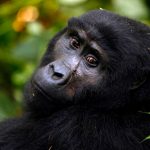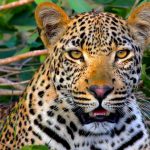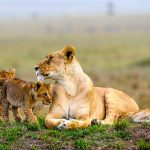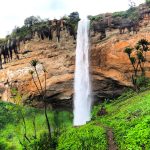Lake Nyamunuka: The Uganda’s Secreted Nature Wonder.
Smack in the middle of Queen Elizabeth National Park, Uganda, is Lake Nyamunuka, also known as the “Lake of Smells.” This mysterious, beautiful lake is steeped in folklore. Though not as widely recognized as some of its regional counterparts, this crater lake possesses a unique combination of natural wonders, cultural stories, and ecological significance that raises its status to that of a nature lover’s and curious traveler’s dream destination.
Location of Lake Nyamunuka.
Lake Nyamunuka lies within the Kasenyi Plains of Queen Elizabeth National Park in Uganda’s Kasese District. Against a general background of the majestic mountain ranges of Rwenzori, this lake is fringed by rolling hills. The environment creates the peaceful retreat of this lake.
Being part of Uganda’s second-largest conservation area, Queen Elizabeth National Park shelters an array of wildlife and contrasting landscapes. Lake Nyamunuka is one of those important hidden treasures among the park’s plethora of attractions. The crystal clear waters reflect the vibrant green colors from the surrounding foliage to create an extremely picturesque and serene haven that is important for all nature and adventure lovers.
The Mystique of a Sulfurous Wonder.
Lake Nyamunuka is one of the most peculiar lakes, especially because of its smell, caused by the sulfur gases that bubble up from beneath its waters; This natural phenomenon is related to the lake’s volcanic origin as part of the Katwe Crater field, a series of volcanic craters that form some of the most dramatic landscapes in Queen Elizabeth National Park.
The smell of Sulphur is believed to have curative properties, especially for the animals like hippos and buffaloes that frequently visit the lake to take baths in its therapeutic waters; This has made Lake Nyamunuka a natural “spa” for wildlife, offering an unparalleled opportunity for visitors to catch sight of animals close by in their natural, tranquil setting.
Rich Wildlife Sightings at Lake Nyamunuka.
Lake Nyamunuka offers a home to many animals besides birds. Situated as it is in Queen Elizabeth National Park, a bio-diversity hot spot, elephants, antelopes, and a host of other birds are common occurrences. Predators like lions and leopards lurk in the plains.
For the birdwatcher, the lake is a haven that attracts African fish eagles, kingfishers, and other waterbirds, adding color and life to the scene. The sulfuric waters interacting with the lush vegetation around the lake create a perfect backdrop for wildlife photography.
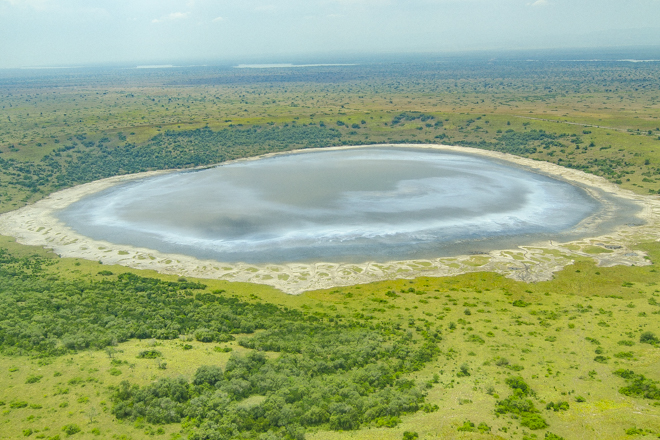
Cultural and Historical Significance.
For communities surrounding it, the lake remains in a core position in local culture. Its name Nyamunuka, when translated, is “the place which smells”, deriving from folklore explanations that refer to the lake’s creation from the gods in punishment over human sinning; There are some tales among them that even regarded it as one of the sacred places used during rituals for dead ancestors’ purposes.
These tales add an enriching layer to the experience of visiting the lake, thereby giving travelers a sense of connection with the region’s history and people.
A Photographer’s Paradise.
Lake Nyamunuka is a place of incomparable scenic beauty. Its shiny surface perfectly reflects the sky and the volcanic landscape around, creating an unutterable play of light and shadow. During sunrise and sunset, the sulfur mist of the lake adds an ethereal quality to the landscape, affording breathtaking photographs.
How to Get to Lake Nyamunuka.
Lake Nyamunuka can be visited on safari in Queen Elizabeth National Park, western Uganda. This park is about 6 to 7 hours’ drive from Kampala, Uganda’s capital city, or via domestic flights to the nearby airstrips.
Visitors can include a visit to Lake Nyamunuka in game drives, alongside other park highlights like the Ishasha sector’s tree-climbing lions, the Mweya Peninsula, or the Kazinga Channel for a boat safari.
Best Time to Visit Lake Nyamunuka.
The best time to visit Lake Nyamunuka is during the dry seasons, which are June to September and December to February. During this time, animals congregate around water sources, including Lake Nyamunuka, offering excellent opportunities for observation.
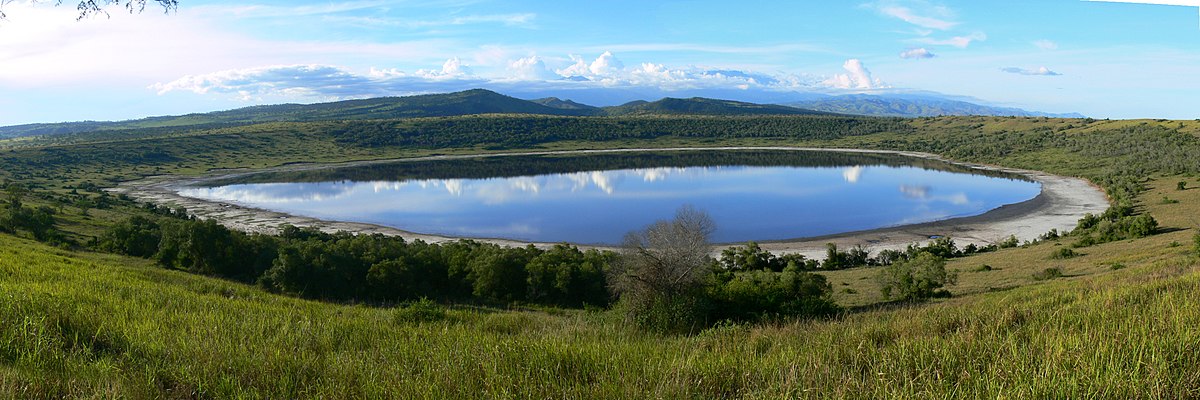
Tips for Visitors.
Pack Binoculars: Perfect for birdwatching and observing wildlife from a safe distance.
Stay Hydrated: The sulfur-rich environment can feel hot and humid.
Observe Park Rules: Keep a safe distance from wild animals and follow directions given by your guide at all times.
Engage a Local Guide: Their knowledge will add to your understanding of the lake’s ecological and cultural importance.
Remarks on Lake Nyamunuka.
The lake isn’t just a body of water but an experience plunging one into the center of Uganda’s natural beauty, cultural heritage, and wild life diversity; Being a photographer, nature lover, or curious traveler, it is a rare chance that the lake avails to reconnect with the very essence of Queen Elizabeth National Park. Explore Lake Nyamunuka and let the “Lake of Smells” enchant your senses and imagination. It is a journey well worth taking, a story well worth telling, and a memory to remember.
Ready to explore? Book with Arcadia Safaris to set off on a guided journey into Queen Elizabeth National Park, where every journey well-lived is a story yet to be told!




